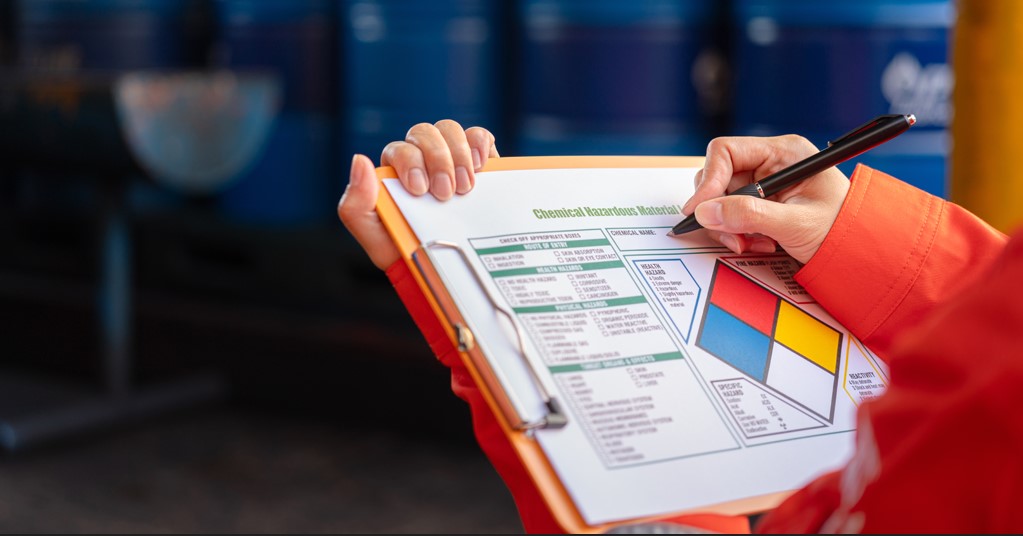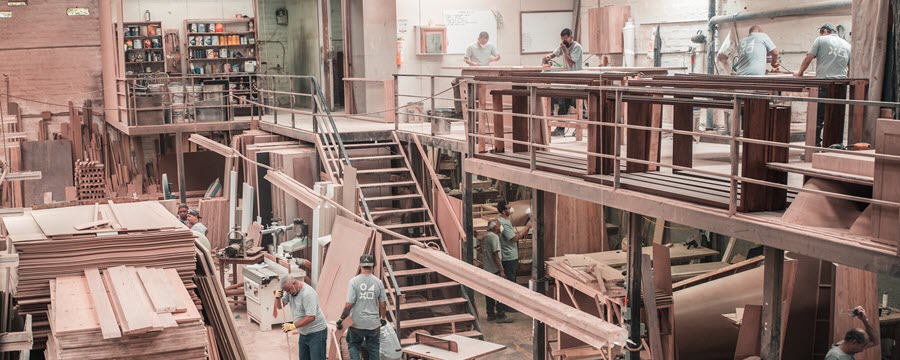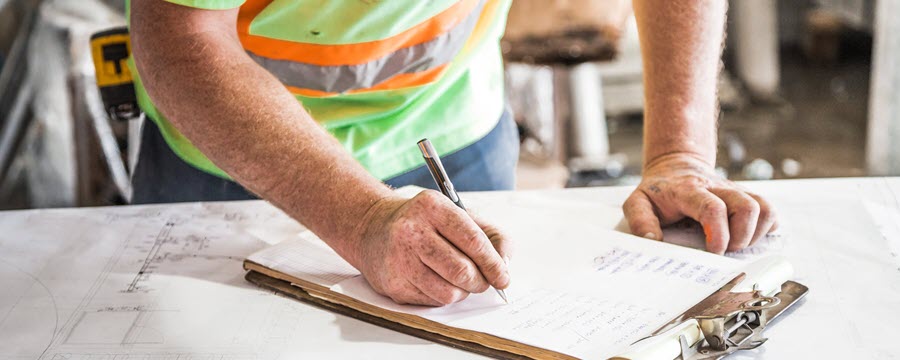
How to Keep Manufacturing Sites Safe from COVID-19

The Coronavirus pandemic is challenging manufacturers and other businesses around the globe. Although there is no single solution to keep manufacturing sites safe from COVID-19 or operating a factory during a pandemic, this collection of ideas and information will help you think about how to keep your manufacturing employees safe, healthy and productive.
Disinfect all relevant areas in your manufacturing facility
Increase the frequency and depth of sanitizing efforts and let employees see them happen to reinforce sanitizing behaviors and create confidence in the safety of the workplace. Pay special attention to:
- Time clocks
- Shared computers, telephones and office equipment
- Locker rooms
- Restrooms
- Break/lunch rooms
- Machine control panels
- Tow motor and other vehicles
- Packaging centers
- Shipping/receiving offices and docks
- Administrative offices
- Air conditioner coils and drip pans
All surfaces are not the same, so it’s critical to follow proper disinfection procedures for each type of surface. The specific procedure for disinfection also varies depending on the type of cleaner you are using. Make sure it is EPA-registered against Coronavirus and that you leave it on the surface long enough. Consider a professional cleaning service.
Management actions to help stop COVID-19 in manufacturing plants
OSHA, the CDC and WHO have issued a variety of advice for businesses. This list from Ohio’s Manufacturing Advocacy and Growth Network (MAGNET), shows what some companies are doing to stop COVID-19 in manufacturing plants. This list may be helpful as you plan actions and routines for your facility.
- Have office teams work remotely. When this isn’t possible, spread out remaining staff as far as possible and hold remote meetings.
- Prohibit nonessential visitors and deliveries
- Screen essential visitors and limit their movement in your facility
- Post COVID-19 safety signs and behavior reminders in many conspicuous areas: plant floor, restrooms, break rooms, etc.
- Train employees and post reminders on recommended anti-COVID behaviors including:
– Respiratory etiquette
– Handwashing
– Use of hand sanitizers
– Refraining from physical contact
– Not sharing utensils, cups, beverages, etc.
– Social distancing - Zone the factory and prohibit employees from moving to zones where they do not need to be to perform their jobs
- Stagger shift start/stop times, break times and lunch times to minimize congregations at time clocks, locker rooms and break areas
COVID-19 Reminders
Post COVID-19 safety signs and behavior reminders in conspicuous areas to help train and remind employees of recommended anti-COVID behaviors.
- Isolate critical personnel (e.g., boiler operators, wastewater treatment engineers, lead electricians, maintenance, etc.) to prevent them from getting ill
- Rearrange equipment and work stations to allow 6 feet of distance between workers if possible. Any steps you take now to spread out workers will likely be good for the future, too.
- Increase cross-training, if it can be done with acceptable distancing, to prepare for more absences
- Check worker temperatures before they enter the factory. Use IR scanning thermometers that don’t require contact or ear thermometers with an alcohol swab between workers. Don’t allow anyone with a temperature above 99.5 degrees to enter. Screeners need to be trained and protected. Note: there are legal implications for this.
- Wear masks or other PPE while in the factory. Consider making masks for workers
- Leave all doors open or remove them when possible to eliminate high-touch surfaces
- Increase ventilation rates and increase the percentage of outdoor air that circulates into the system
- Buy no-touch disposal receptacles or remove lids that require contact to open
- Disinfect all touched surfaces between each shift
- Eliminate all routine shift hand-off meetings, limit them to specific people or do them virtually
- Move from 1 or 2 shifts to 3 shifts and keep each shift with the same people each day. This protects other workers if one shift gets sick. Or have one crew work part of the week and another crew work the rest. This may also accommodate shifting child care schedules.
- Stagger shift start/stop times, break times, and lunch times to minimize congregations at the time clocks or break areas
- Shut the plant when production is not needed (even if you ramp on and off on a daily basis). Every bit of time not spent around other people may eliminate the spread of the virus.
These are all in addition to the specific guidelines issued by your state or province.
Restrict Visitors
Help prevent introduction of Coronavirus into your plant by screening essential visitors and prohibiting nonessential visitors and deliveries.
Identify high-risk employees
Ogletree Deakins’ Manufacturing Industry Group recently conducted a manufacturers’ roundtable discussion involving scores of manufacturers from numerous industry sectors to share ideas about how manufacturers can continue to operate in the face of this pandemic. Here are some of the ideas from that discussion.
Where feasible, identify and exclude employees who are at high risk. For example, employers may want to encourage employees who have taken cruises or international flights in the last few weeks, or who live with individuals with symptoms of COVID-19 infection, to remain at home. Here are some potential ways to identify high-risk persons:
Self-Identification – Ask workers if they or anyone in their household have COVID symptoms in regular surveys or interviews. To encourage full disclosure, employers may find it useful to modify attendance policies to allow time-off without penalty; modify paid-time-off or vacation policies to waive notice or full-week requirements to allow employees to use paid leave entitlements; allow employees to borrow from future leave entitlements; or increase paid leave benefits.
Spot and React To Symptoms – Train supervisors and employees to spot symptoms of possible infection in coworkers and encourage reporting. Basically, promote a “see something, say something” mind set. OSHA says, “prompt identification and isolation of potentially infectious individuals is a critical step in protecting workers, customers, visitors, and others at a worksite.”
Consider incorporating some of these ideas into your operation to help keep workers healthy, stop COVID-19 in manufacturing plants and reduce the impact of Coronavirus on production.
Coronavirus Resources for Employers:
- CDC & OSHA Guidance for Manufacturing Workers and Employees
- OSHA COVID-19 Information
- NIOSH Coronavirus Resources
- Using UVC Light Sanitation to Kill Germs
- Small Business Administration Disaster Loan Assistance for Small Businesses
- US Chamber of Commerce Coronavirus Small Business Guide
- COVID / Coronavirus safety signs, posters and more

